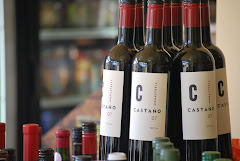is a restaurant expert, coach, trainer and speaker, specializing in systems for independent restaurant owners. In a recent article on his website, he advises potential restauranteurs to "look before you leap".
 As you might imagine, as an industry expert, Mr. Peters gets a ton of inquiries from people interested in taking the leap and opening their own place. For most independent restaurant owners, the venture is a lifelong dream and they can imagine every detail of having a successful restaurant. Usually these owners have a very certain idea about what it is going to be like to run their own place; but without proper preparation, the reality and the dream are nothing alike.
As you might imagine, as an industry expert, Mr. Peters gets a ton of inquiries from people interested in taking the leap and opening their own place. For most independent restaurant owners, the venture is a lifelong dream and they can imagine every detail of having a successful restaurant. Usually these owners have a very certain idea about what it is going to be like to run their own place; but without proper preparation, the reality and the dream are nothing alike.It's a known fact that running an eatery is one of the most difficult businesses an entrepreneur can embark on. 61 percent of all new restaurants fail within the first three years, according to an Ohio State University study, with the failure rate reaching as high as 87 percent in some segments. And to make matters worse, restaurants are a very unattractive business investment for lenders because the average restaurant only makes about 5 cents out of every dollar it brings in. Potential restaurant owners must first do their homework in order to convince the banks that they can make it in the restaurant biz.
 Mr. Peters' first piece of advice is to start with a business plan which includes thorough market research. This may seem like an obvious piece of advice but still, the number of restaurant owners who fail to create a business plan is absolutely shocking despite the statistics that back it up. A business plan is absolutely essential to ensure success. Details which should be included in this plan include what makes the concept unique, the type of service and menu planned, price points, an evaluation of the market and the target demographics, a marketing plan, a financial plan and an operational plan which includes the key players from industry experts and key suppliers.
Mr. Peters' first piece of advice is to start with a business plan which includes thorough market research. This may seem like an obvious piece of advice but still, the number of restaurant owners who fail to create a business plan is absolutely shocking despite the statistics that back it up. A business plan is absolutely essential to ensure success. Details which should be included in this plan include what makes the concept unique, the type of service and menu planned, price points, an evaluation of the market and the target demographics, a marketing plan, a financial plan and an operational plan which includes the key players from industry experts and key suppliers.A potential restaurant owner must be able to show on paper that the concept will work. This is the most important attribute of the business plan because lenders look for key financial indicators as a predictor of success.
- The restaurant owner must plan on bringing in $1.25 for every dollar borrowed in the initial year's revenues
- Total occupancy costs and overall debt service must stay between 8-12 percent
- A full service restaurant must show at least $150-$250 in sales per square foot or $200-$300 in sales per square foot for a quick service restaurant.
- Prime cost, total labor cost plus total cost of goods sold, the biggest expense, must stay under 65 percent of sales for a full service establishment and 60 percent for a quick service establishment. (although, to be safe, Mr. Peters recommends every restaurant owner aim for 55 percent).
 If the proper research is done and a strong business plan with smart financials is created, potential restaurant owners have a real shot at getting the funds to open and be successful.
If the proper research is done and a strong business plan with smart financials is created, potential restaurant owners have a real shot at getting the funds to open and be successful.It's never too late to write a proper business plan. Even if a restaurant has been operating without a business plan, restaurant owners can still create a plan that will uncover a restaurant's potential for the future.
If you'd like more information like the advice in this post, visit David Scott Peters' website at http://www.TheRestaurantExpert.com and sign up for his newsletter.
To read more about dining in Michigan or to interactively search for restaurants in Michigan, visit http://www.miflavor.com, http://mobile.miflavor.com, or visit Michigan Flavor's Directory of Michigan Restaurants blog.





No comments:
Post a Comment